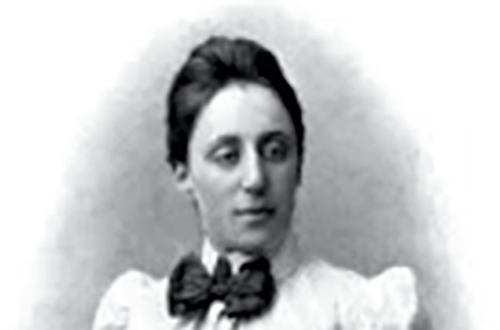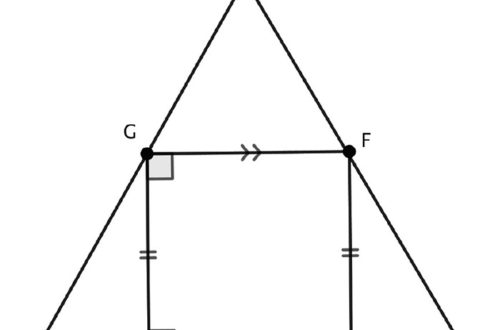Journal of the Mathematics Council of the Alberta Teachers’ Association
Volume 28 Issue 1, April 1990
Before discussing this issue’s theme, I want to take this opportunity to thank John Percevault, editor of delta-K for many years. The time and energy John devoted to this journal are much appreciated. He has also been invaluable to me in the “changing of the guard.”
Any changes in editorship result in changes to the journal. I hope you will inform me of any changes you would like to see, and provide feedback on what you like and do not like about delta-K. Alberta educators must communicate their questions and concerns about mathematics education. A letters department or a dialogue department can be created if you indicate that you would like one. My role as editor is to create dialogue and to provoke and encourage responses from you; therefore, I will be articulating some issues and/or questions related to the articles in each journal. Although these will be my issues and concerns, this journal is for you; your thoughts and questions are welcome.
This issue of delta-K is organized around the theme of contextualizing mathematics, of placing problems and exercises in a setting meaningful to students. Ofren we assume that because mathematics deals with abstractness, we as teachers need to be abstract. But we do our students a disservice by being too abstract and by teaching them basic facts, such as 4 + 6, without connecting these facts to the real world or to manipulatives. When we move beyond Grade 1 or 2, we seem to feel that contextualizing mathematics is not as necessary as it is for younger students. So students in Grades 4 to 6 and especially in Grades 7 to 13 are rarely offered alternate, contextual ways of making sense of abstract mathematical symbols and concepts.
To cope with the abstractness, students in the classroom ofren memorize mathematical rules and procedures, and attempt to use them by manipulating symbols. This memorization approach to learning and doing mathematics stems partially from viewing the discipline as decontextualized. Often students deal solely with symbols.
Students who memorize rules and procedures with little understanding of these procedures or why they use them concern me. Through my work with elementary teachers and with students studying to be elementary teachers, this concern has recurred. But this concern is not only mine; it is expressed by mathematicians and mathematics educators at all levels.
The relationship between students memorizing rules and procedures and a decontextualized view of mathematics is complex. One way of exploring the relationship is to observe children working through mathematics problems and to speak with them about what they are doing. In one of the methods courses I teach at the University of Calgary, my students enter elementary classrooms and conduct interviews with schoolchildren of various ages. Students asked the children how the mathematics they are learning was used outside the classroom. Most often, the response was that mathematics was used to do their homework or to help their younger brothers and sisters do their homework. What startled my students was that the children did not connect a problem, like 43-17, with any real world context. It had become totally abstract and decontextualized.
Even for many of the schoolchildren who have used manipulatives to learn the algorithms of addition, subtraction, multiplication and division, there still exists a “memorize what to do” attitude toward mathematics. When my methods students asked the children about the connection between the manipulatives and the paper and pencil algorithms, they saw little relationship between the two. The children can operate using the manipulatives, but often it seems as though they have memorized how to use them, just like they memorize how to do the paper and pencil procedures.
If children are so attached to memorization as a way of learning mathematics, we need to question how we are using manipulatives in the classroom. Manipulatives are an excellent way to contextualize mathematical concepts because children can see and touch the materials, but we must not assume that the materials themselves will assure student understanding of the concepts. We have assumed that merely using base-10 blocks, for example, will automatically help children understand place value. This may or may not be the case. We need to explore what children do and do not understand about the materials and how they are related to the concepts we are teaching. In essence, we need to examine the use and misuse of manipulatives more closely.
Similarly, estimation skills can be learned in a rote, mechanical manner with little understanding of their purpose. Often we ask children to estimate the answer to problems like 998 + 665 or 1.25 x .56. Again, by giving only the numerical symbols, we have removed any relevant context, and we may have unconsciously promoted the memorization of estimation rules.
This issue of delta-K deals with manipulatives and estimation. Because both of these topics are of current interest in mathematics education, and seem to get enormous coverage in journals such as The Arithmetic Teacher and other publications of the National Council of Teachers of Mathematics (NCTM), I want to take an alternate approach in this issue. I wish to emphasize the importance of using manipulatives as a way of contextualizing mathematics for students at all grade levels and to emphasize how estimation skills can also be contextualized.
The article by A. Craig Loewen deals with some theoretical issues related to using manipulatives in the classroom. Loewen offers some excellent contextual ideas for illustrating algebraic concepts, particularly for concepts that students have difficulty visualizing.
The second article by Bernard Yvon and Anne Fortin offers a concrete idea for motivating young children to work with place value ideas in a meaningful way. In her article, Karen Ibbotson offers some practical ideas for using manipulatives to teach the basic ideas of addition, subtraction, multiplication and division of whole numbers.
The article by K. Allen Neufeld on tessellations offers some excellent activities for contextualizing geometric concepts. If you are interested in tessellation in the arts, I recommend the work of M.C. Escher.
The article by Jeanette Parow-Jarman and Dave Whiteside describes a problem solving activity they conducted with elementary schoolchildren and explores the relationship between their own behaviors and assumptions, and how they affected the children’s thinking. As well as using manipulatives to concretize and contextualize the problem, the children were given a writing activity to describe how they solved the problem.
The last two articles deal with the topic of estimation. The article by Yvette d’En[remont offers some background on research done with students’ concepts of decimal estimation and discusses the idea of procedural knowledge and how students who do not connect decimals to a meaningful context learn to memorize and manipulate symbols. She also offers some real world suggestions for contextualizing the estimation of decimals. The article by Katherine Willson offers some excellent suggestions for bringing estimation ideas into a meaningful context for students in Grades 4 to 7.
These articles obviously offer but a small sample of ideas and issues surrounding the topics of manipulatives and estimation. I hope they will stimulate you to think about the topics and to enter into discussions about them and about the theme “contextualizing mathematics.”
Linda I. Brandau
1
2 – 3
Contextualizing Mathematics Through Manipulatives and Estimation
Linda I. Brandau
4 – 11
Implementing Manipulatives in Mathematics Teaching
A. Craig Loewen
12 – 15
Bring a Big, Bright Smile to Math with Plinko!
Bernard Yvon and Anne Fortin
16 – 18
Hands Off the Textbook: Hands On the Manipulatives
Karen Ibbotson
19 – 23
Tessellation, Tiling or Surrounding a Point
K. Allen Neufeld
24 – 29
Actions and Assumptions: Their Relationship to Student Thinking
Jeanette Parow-Jarman and Dave Whiteside
30 – 33
Yvette M. d’Entremont
34 – 35
Katherine Willson
36



